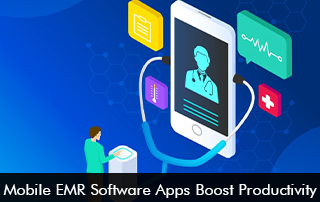EMR Software mobile apps allow physicians, nurses, and hospital administrators to access patient records, update charts, and manage workflows from anywhere. By eliminating traditional paper-based processes and desktop-bound systems, mobile EMR apps enhance productivity across healthcare organizations.
EMR Software Apps for Seamless Access to Patient Data
Before mobile EMRs, healthcare providers had to rely on desktop computers or paper charts, which often led to delays in accessing critical patient information. With mobile EMR apps, doctors and nurses can instantly pull up medical histories, lab results, and treatment plans from their smartphones or tablets. This real-time access reduces time wasted searching for records and allows clinicians to make faster, more informed decisions. For hospital administrators, mobile access means they can review reports, approve workflows, and monitor operations even when they’re away from their desks. The ability to work flexibly without being tied to a workstation significantly boosts efficiency across the entire healthcare team.
Faster Documentation and Reduced Administrative Burden
Manual charting is one of the biggest time drains in healthcare. Traditional EMR software often requires clinicians to spend hours entering data after patient visits, leading to documentation backlogs and burnout. Mobile EMR apps streamline this process by enabling point-of-care documentation. Physicians can input notes, update treatment plans, and order prescriptions directly at the patient’s bedside using voice-to-text features or customizable templates. This not only saves time but also improves accuracy since details are recorded while still fresh in the provider’s mind. Additionally, automated coding and billing integrations reduce the administrative burden, allowing staff to focus more on patient care rather than paperwork.
EMR Software Apps Improve Care Coordination Among Teams
Effective healthcare relies on seamless communication between doctors, nurses, specialists, and support staff. Mobile EMR apps facilitate better collaboration by allowing instant sharing of patient updates across departments. For example, a nurse can flag a critical lab result, and the attending physician receives an immediate alert on their phone. Similarly, specialists can review a patient’s records before a consultation without needing to request files manually. This level of coordination minimizes delays, prevents redundant tests, and ensures continuity of care, especially in fast-paced environments like emergency rooms or multi-specialty hospitals.
EMR Software Apps Enhance Patient Engagement and Satisfaction
Mobile EMR apps don’t just benefit healthcare providers—they also improve the patient experience. Many platforms include patient portals where individuals can view their medical records, schedule appointments, and message their doctors securely. When providers have quick access to records during consultations, they spend less time searching for information and more time engaging with patients. Faster response times, reduced wait periods, and more personalized care all contribute to higher patient satisfaction scores, which are increasingly important in value-based care models.
Reduced Risk of Errors and Improved Compliance
Paper-based records and manual data entry are prone to human error, which can lead to misdiagnoses, incorrect treatments, or compliance issues. Mobile EMR apps minimize these risks by automating workflows and integrating clinical decision support tools. Alerts for drug interactions, allergy warnings, and best-practice guidelines help providers make safer decisions. Additionally, encrypted mobile access ensures that patient data remains secure, helping healthcare organizations stay compliant with HIPAA and other regulatory requirements.
Mobile EMR Software Saves Cost and Operational Efficiency
Beyond clinical benefits, mobile EMR software contributes to financial savings. Reduced paperwork cuts down on printing and storage costs, while faster documentation allows providers to see more patients in a day. Automated billing and coding reduce claim denials, improving revenue cycles. For hospital administrators, the ability to monitor operations remotely means fewer delays in decision-making and resource allocation. Over time, these efficiencies translate into significant cost reductions and a stronger bottom line.
The Future of Mobile EMR Software in Healthcare
As technology continues to advance, mobile EMR apps will integrate even more powerful features, such as AI-driven diagnostics, telehealth integrations, and predictive analytics. Healthcare providers who adopt these tools early will stay ahead of the curve, delivering faster, more accurate, and patient-centered care.








